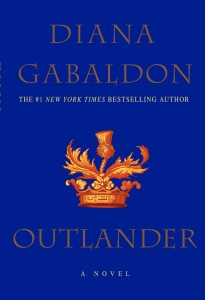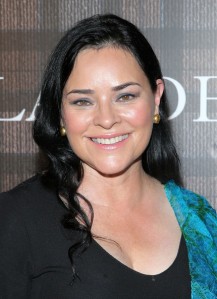 Outlander (Book One)
Outlander (Book One)
by Diana Gabaldon
Bantam, re-issue 2014
ISBN: 978-0553393705
850 p.p.
A Love Letter to Mass Market Paperbacks
So if you have taken the first step to admitting that you love books and reading, you inevitably take the next step to deciding what your “genre” is. We all go through an experimental phase where we check out different kinds of books but inevitably settle into a comfortable circle. We have familiar authors the way other people have familiar coffee orders—and there’s nothing wrong we that. However, it tends to come with a certain degree of snobbery—my genre is better than your genre and other nonsense like that. Especially if you were an English major in college you’ve experienced the pain of explaining to someone that these are not my books—they just aren’t my books. For some reason we always accept that as an appropriate justification for why a book is allowed to be abandoned or harangued—and many of us take part in genre bashing. For example (and perhaps an overused example) is whenever one of my teenagers (I teach high school) asks me what I think about Twilight—thank God Twilight is being replaced by other books and this conversation happens less and less. I have nothing specific against Twilight or Meyer as a writer—but I’ve read (and loved) that genre for a long time and there are simply better examples of it than Twilight. The literary snob in me emerges and whenever people ask why I don’t love Bella Swan and Edward Cullen as much as the average one-book-per-annum soccer mom I ask why they don’t love Amelia Atwater-Rhodes. She is perhaps the single most underrated writer in the teen science-fiction category as she was only 13 when her first book was published (don’t worry, I plan on doing a Throwback Thursday read of it and reviewing it, but if you can’t wait for that please Amazon.com In the Forest of the Night immediately). Atwater-Rhodes reads like Meyer—there’s a delicious familiarity to the structure, a dab of teen angst (oh God Demon in my View WAS MY TEEN ANGST PHASE) and vampires. Lots of vampires. And witches. And shape-shifters. I eventually graduated from Atwater-Rhodes to Anne Rice (is there any dispute that she’s the queen of the genre?) and meandered around the aisles of Barnes and Noble for many moons acquiring different books from the same genre that still litter my library.
I have always loved these books and they typically come out in what we-who-troll-the-book-release-blogs know as the Mass Market Paperback. Mass Market Paperbacks get a lot of flack from the capital “L” Literary crowd as being fodder—the lettuce of the book world, filling but empty at the same time. Mass Market Paperbacks have a schtick—they are usually long, well over 300 pages (Atwater-Rhodes falls in the teen category of MMP so she’s a bit shorter); they have a fairly low lexile (the average middle schooler can read the content and understand the majority of it); they have a structured and predictable plot (think easy-reading, the kind of thing you can read at the beach without breaking a mental sweat); and there is a heavy-handed love or romance plot as these books are typically marketed at women. If you are in the teen section (like Twilight) sex might play a background role to angst and long-distance, unrequited or forbidden love. If you are in the adult section of the MMPs there is always sex—and it ranges from James Patterson awkward love scenes to full blown 50-shades-of-erotica. If you were drawn to Outlander you might not realize that you have found a familiar section of the MMP’s—the historical erotica, also known as Bodice Rippers.
When I sat down to read Outlander it was after watching the Starz Original Series of the same name and seeing the familiar aspects of the Bodice Ripper genre. I’d be lying if I said I wasn’t a fan of Bodice Rippers (I inhaled more than half of the Francesca Cahill series from Brenda Joyce in high school and had to walk away because I got the reading equivalent of brain freeze) but a lot of people really trash the genre. Goodreads, which I use to track my reading progress and keep myself honest about how many books I’m reading, has in its opening review for Outlander a review that says we should embrace the series for the trash it is. Ooey, gooey bodice ripping trash.
I’m not going to call Outlander trash—it is precisely what I expect from Mass Market Paperback historical romance. I like the science fiction element of time-travel being added to it and you can’t deny that unlike many of its MMP brethren this book has serious staying power: it was released in 1991 and saw a resurgence in 2014? Really? That’s incredible. If you look at the release numbers through the years the book has been consistent— the latest book in the series was only released this year and there had to be enough interest in the series to have continuous publishing for all these years. Gabaldon as a writer is extremely educated, not necessarily in Scottish politics and culture from the 18th century but she is nobody’s fool. She’s Arizona born and went on to get a BS in Zoology, an MS in Marine Biology and a PhD in Behavioral Ecology— extremely impressive. Before Outlander gained acclaim she was a full-time assistance professor at ASU and did editing for science journals. She is now one of the few people in writing who can say they write full-time—most writers never gain the notoriety necessary to quit their day-jobs and Gabaldon manages to immerse herself in the Fraser family epic on a daily basis. Her son, Sam Watkins, even became a writer under the name of Sam Sykes.
Outlander is not pretentious: it knows what it is and provides precisely what is expected to the reader, and this is by no means an insult to the book or its genre. We meet Claire Randall in a post WWII second honeymoon with her husband Frank and after several rounds of expected coital exchanges she falls through the Standing Stones at Craigh Na Dun into 18th century Scotland (and the arms of the strapping Jamie). Of course, Claire loves her husband Frank and is torn over her increasing feelings for Jamie, but just so she doesn’t feel like a harlot she is forced to marry Jamie to protect her from Black Jack Randall, a harsh British soldier that happens to look exactly like his descendent, Frank. After marrying Jamie Claire decides to be a good sport and proceeds to consummate the marriage…..and then they consummate like bunnies for a few hundred pages while plot points orbit around their sexual escapades. The book is lovely in that for 90% of the book you expect what happens….than the 10% of it that surprises you come as a welcome treat, a reprieve but enough to keep you going through to the end. At 850 pages Outlander is not for the faint of heart—you are drawn into finishing the plot and seeing precisely what twists and turns we must make with our Scottish outlaw and his Sassenach wife— Sassenach means, appropriately, Outlander.
There are eight books currently out for the series, each with damn near 1,000 pages….for a whopping 8,000 pages of material on Claire, Jamie, their shagging and the adventure of their life together. This is impressive— most people can’t write 1,000 pages on a given topic and keep it entertaining, much less 8,000. Anyone who wants to bash Gabaldon can do so by producing the same amount of entertaining content and earning the type of credentials she enjoys (yes, I’m looking at you Goodreads Reviewer #1). These books are totally part of a genre—but all books are, and holding a book’s genre against it is an exercise in futility. Besides MMPs have a vital role: they get non-readers reading and that’s something all of us Barnes and Nobles Trolls should support. For example, I’ve never seen my mother pick up anything besides James Patterson and Janet Evanovich—not to knock the two of them but their books also fall into a certain trend, less than 300 pages of predictable plot. I used to see my mother stuck on the same Evanovich book in the space it took me to read 3 or 4 of the same series (yes, we are a family of Stephanie Plum readers—and we once had a 3 generation trip to an Evanovich signing, suck on that Literati Police). Now I’ve seen my mother read Outlander, Dragonfly in Amber, Voyager, Drums of Autumn and The Fiery Cross since September. That’s nearly 5,000 pages in 4 months—very impressive for a nonreader. I can only anticipate she’s going to increase in speed now that she received the final three books in the series for Christmas because she’s anxious to see what happens—and she can keep me on the phone for over an hour giving me every minute detail of the latest adventures of Claire Beauchamp Randall Fraser and her red-headed Scot. She’s not the only one either—a flurry of people I know that normally don’t read anything longer than a Facebook status can’t wait to tell me about Claire and Jamie and precisely which of these books I need to make it to as it is “the best of the series, I promise”.
I don’t need to review Outlander’s plot to get people reading it—Outlander doesn’t disguise its plot as anything and it is precisely what you think it is—rather the best review I could render was one for the genre and the author, neither of which should be underestimated. If we want to expose women writers we first must take some of the genre-shaming that belittles so many of them—these women are just as much writers as anyone else. The fact that I knew Claire was going to fall in love with Jamie from pretty much the second page of the book doesn’t change that Gabaldon wrote smoothly with attention to detail and kept me engaged—her genre has no relation to her ability to hold a reader, which she did for the full 850 pages.
***
 Diana Gabaldon is a former professor at ASU with a PhD in Behavior Ecology. She was inspired to write the Outlander series by a minor character on Doctor Who and the series, which started in 1991, has gone on to reach massive popularity. Starz has recently undertaken to make it an original series by the same name. Gabaldon has won the Romance Writers of America’s RITA Award for Best Romance of 1991 and is a frequent presence on the New York Times Best Seller list. She was the recipient of a Quill Award for book 6 of the series, A Breath of Snow and Ashes. The Outlander series is published in two dozen countries and nearly as many languages. For those who don’t like the historical romance genre, she recently nominated for an Edgar Award for A Plague of Zombies.
Diana Gabaldon is a former professor at ASU with a PhD in Behavior Ecology. She was inspired to write the Outlander series by a minor character on Doctor Who and the series, which started in 1991, has gone on to reach massive popularity. Starz has recently undertaken to make it an original series by the same name. Gabaldon has won the Romance Writers of America’s RITA Award for Best Romance of 1991 and is a frequent presence on the New York Times Best Seller list. She was the recipient of a Quill Award for book 6 of the series, A Breath of Snow and Ashes. The Outlander series is published in two dozen countries and nearly as many languages. For those who don’t like the historical romance genre, she recently nominated for an Edgar Award for A Plague of Zombies.

Pingback: Raven Girl by Audrey Niffenegger | TCJWW·